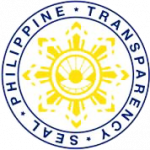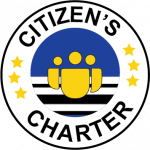- GOVPH
- About BOC
- Issuances
- Aduana Library
- Memoranda
- Memoranda for Reference Values
- Customs Administrative Order (CAO)
- Customs Administrative Order (CAO) 2025
- CUSTOMS ADMINISTRATIVE ORDER (CAO) 2024
- Customs Administrative Order (CAO) 2023
- Customs Administrative Order (CAO) 2022
- Customs Administrative Order (CAO) 2021
- Customs Administrative Order (CAO) 2020
- Customs Administrative Order (CAO) 2019
- Customs Administrative Order (CAO) 2018 and Older
- Customs Memorandum Order (CMO)
- Customs Memorandum Circular (CMC)
- Customs Memorandum Circular (CMC) 2025
- Customs Memorandum Circular (CMC) 2024
- Customs Memorandum Circular (CMC) 2023
- Customs Memorandum Circular (CMC) 2022
- Customs Memorandum Circular (CMC) 2021
- Customs Memorandum Circular (CMC) 2020
- Customs Memorandum Circular (CMC) 2019
- Customs Memorandum Circular (CMC) 2018 and Older
- Customs Special Order (CSO)
- Custom Training Circular (CTC)
- Joint Memorandum Orders (JMO)
- Trade
- News Room
- Port Updates
- HR Corner
- Quicklinks
- Infographics
- Bureau of Customs Webinar
- Auction and Sales
- Bid Opportunities
- Invitation to Bid / Request for Quotation / Invitation for Negotiated Procurement / Notice to Conduct Direct Contracting – 2023
- Invitation to Bid / Request for Quotation / Invitation for Negotiated Procurement / Notice to Conduct Direct Contracting – 2022
- Invitation to Bid / Request for Quotation / Invitation for Negotiated Procurement / Notice to Conduct Direct Contracting – 2021
- Invitation to Bid / Request for Quotation / Invitation for Negotiated Procurement / Notice to Conduct Direct Contracting – 2020
- Invitation to Bid / Request for Quotation / Invitation for Negotiated Procurement / Notice to Conduct Direct Contracting – 2019
- Invitation to Bid / Request for Quotation / Invitation for Negotiated Procurement / Notice to Conduct Direct Contracting
- Bid Documents
- Bid Supplement
- Summary of Awarded Contracts
- Summary of Contracts Awarded 2023
- Summary of Contracts Awarded 2022
- Summary of Contracts Awarded 2021
- Summary of Contracts Awarded 2020
- Summary of Contracts Awarded 2019
- Summary of Contracts Awarded 2018
- Summary of Contracts Awarded 2017
- Summary of Contracts Awarded 2016
- Summary of Contracts Awarded 2015
- Summary of Contracts Awarded 2014
- Summary of Contracts Awarded 2013
- Annual Procurement Plan
- Customs Knowledge Resources
- References
- Gender Equality and Diversity
- Philippine National Trade Repository
- Philippine Tariff Finder
- Authorized Economic Operator
Philippine Customs Modernization Program
The Bureau of Customs is hard at work, reforming, transforming, performing.
Our goal: a modernized customs administration at par with global standards
To reach this goal, the BOC undertakes the Philippine Customs Modernization Program or PCMP, with the support provided by the World Bank Group
With major components and innovations, the PCMP aims to streamline operations and processes and support the reform agenda by upgrading BOC systems, procedures, and operational activities.
Among these innovations is the Customs Processing System (CPS). It serves as one single and unified system that combines all the key elements and customs procedures.
The CPS combines the features and functionalities of the currently implemented E2M customs module and adds features that facilitate business continuity under on optimized. This makes for an efficient and ready BOC that can trade and operate in the face of any restriction or eventuality, such as the present conditions under the COVID-19 pandemic.
The CPS’ new operating model focuses on a Risk-Based Compliance Management environment. As part of the modernization efforts, this component supports the adoption of a more sophisticated risk management and cargo targeting capability, together with modernized non-intrusive inspection services that provide the detection and control capability
The CPS’ new operating model focuses on a Risk-Based Compliance Management environment. Utilizing
Remote Image Analysis Centers (RIACs), a combination of hardware and software, this allows BOC to receive and interpret radioscopic images sent from operational scanner sites in real-time. It also means that the BOC can analyze X-ray images and improve detection capabilities for increased efficiency and faster inspections of shipments.
The RIACs are fully integrated into the CPS, allowing BOC to leverage its modern risk management functions for more effective targeting, and strengthen BOC’s capability to effectively manage and operate its modern non-intrusive inspection technology and processes. The remote image capability inspection also boosts the BOC’s anti-corruption efforts as it eliminates face-to-face interaction between traders and officials examining radiographic images. The improvement in the process also impacts positively on the conduct of non-intrusive inspections both at the piers and airports where x-ray equipment are deployed.
The State-of-the-Art Data Center has the infrastructure required to run ICT solutions and bring new and improved network connectivity to BOC offices nationwide, eliminating downtime and providing disaster recovery.
Finally, another core component of the Philippine Customs Modernization Project is the Organizational modernization. With new ICT systems in place, functional and organizational realignments will be implemented, to ensure that the institutional structure responds to new responsibilities, additional jobs for high-value functions such as risk management, intelligence, and post-clearance audit. Training and skills enhancement programs will be implemented on a continuing basis for employees to adapt to new jobs and responsibilities.
The organizational modernization will impact on all the back-office and administrative systems. The PCMP also provides for the appointment of a turn-key supplier to develop the Administrative Back-office Enterprise Resource Planning System (ABERP). This covers human resource systems to manage staffing growth for career planning of a professional workforce, including case management and an assets management solution that can support all core productive assets of BOC.
From a largely manual and paper-based organization with most resources deployed around cargo control, declaration, assessment, and inspections, the modernized Bureau of Customs envisions to deploy its resources to value-added activities such as registration, targeting, and audit.
Our goal to modernize and achieve global standards is made possible through the PCMP and the support of the World Bank.
The target is to achieve full modernization by 2024. With teamwork, determination and discipline, the service we render will be better for our country and our people.
ABOUT GOVPH
All content is in the public domain unless otherwise stated.






